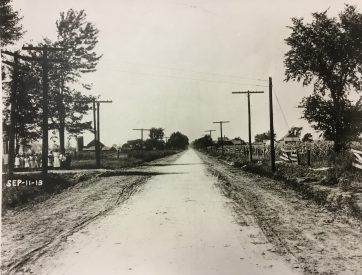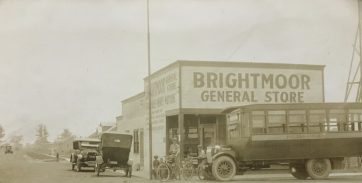History of the Development of B.E. Taylor’s Brightmoor, Detroit Neighborhood, Part IV

The population of the Brightmoor neighborhood of Detroit rapidly increased from 8 residents and 6 houses in 1922, to 11,319 residents and 3,958 houses by 1925. By that same year, the community included 190 businesses, a community hall, 4 churches, five schools, one bank and one movie theater. Most of the community was young married couples and about half of them had children (Loeb p. 61).
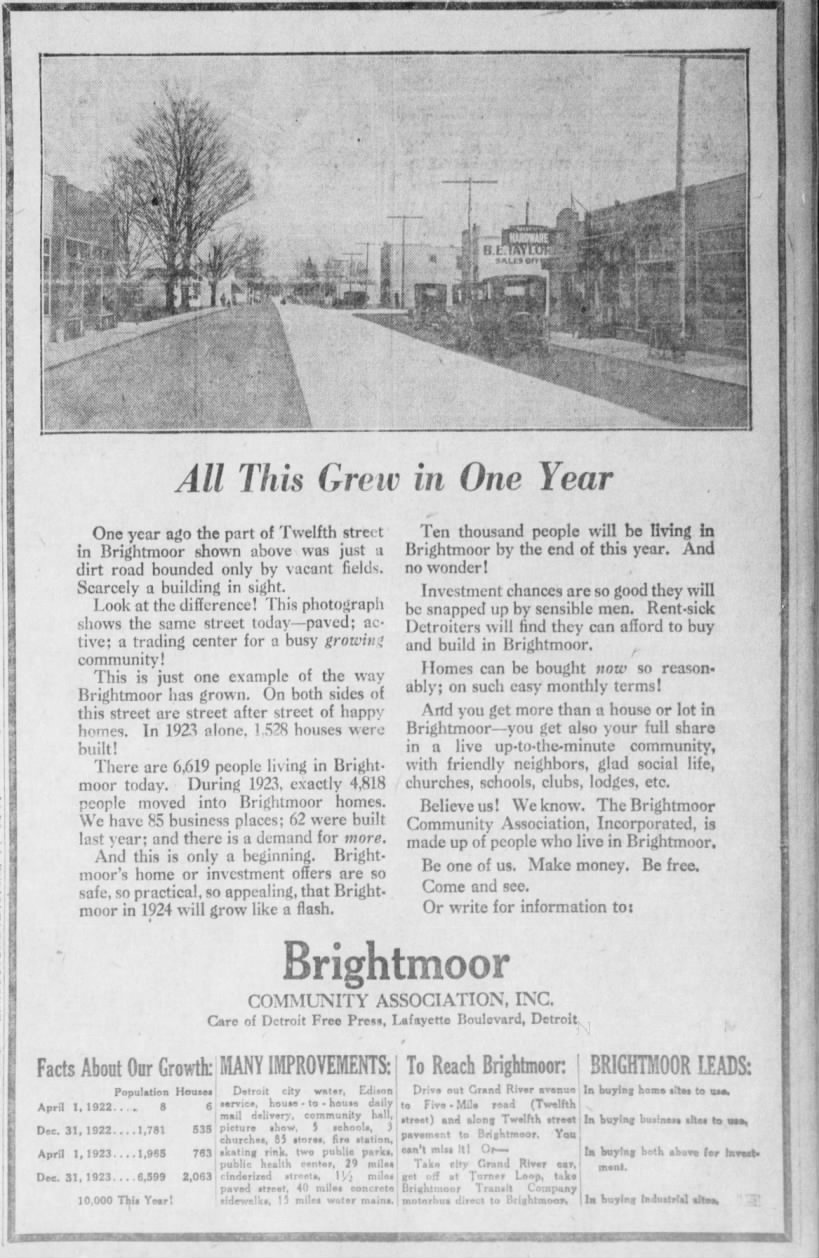
Consequences of Substandard Housing
By the late 1920s, some Brightmoor residents made enhancements to their homes, including digging basements, adding indoor bathrooms, and remodeling. Some residents built better homes on the extra lots they purchased. Other residents were not as fortunate. Some of the factors that drove Brightmoor’s rapid development would, within a few short years, become contributing factors to bringing the neighborhood’s growth to a screeching halt.
Some homeowners were unable to maintain steady employment with sufficient wages to support their mortgages or the completion of the construction of their home. Some buyers were living in garage homes and tar paper shacks that soon became dilapidated from being exposed to the elements. To make matters worse, Brightmoor had no paved streets, no street lights, and no water connections. Only 3/4 of the homes had inside toilets even though for over 25 years Detroit had prohibited the use of outhouses. B.E. Taylor provided a daily water delivery system from a “water wagon,” but it was hardly sufficient to support the rapidly growing population. Brightmoor simply lacked the infrastructure to support the increased population in the area.
The lack of amenities, including running water and indoor bathrooms began to have dire consequences on public health. By 1925, Brightmoor had become the object of study by the Michigan Department of Health when social workers found that inadequate sewage disposal caused a high number of bacterial infections in children living in the community. This resulted in the Federal Housing Administration characterizing Brightmoor as ”a socially sick and potential slum” and refusing new home loans on those grounds.
By 1926, Brightmoor was annexed by Detroit giving residents much needed utility services, as well as police and fire protection (Loeb).
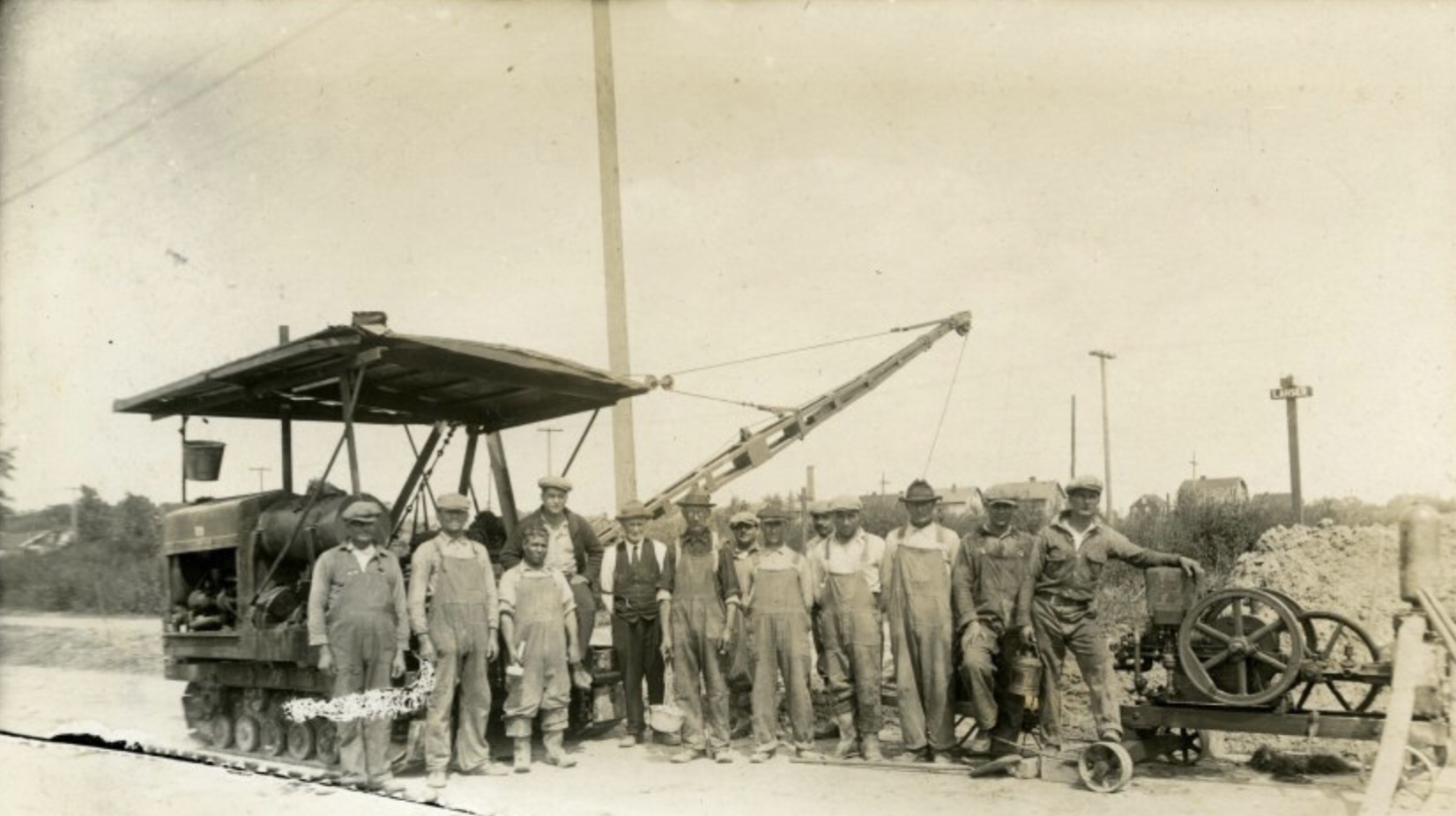
Taylor’s strategy for developing Brightmoor without complete infrastructure was not uncommon for developers during the surge of urban expansion in the 1920s. Some developers purchased low priced unincorporated land and avoided infrastructural costs anticipating that the neighborhood would eventually be annexed by the closest nearby major city. However, these communities usually developed over time and with existing commercial and other infrastructure nearby (Loeb).
Brightmoor’s Lingering Troubles and The Great Depression
Despite the annexation to Detroit bringing much needed city services to Brightmoor, many homeowners could not afford to finance the installation of furnaces and the equipment necessary to support the services. Some residents were unable to maintain their house payments and were forced to abandon their homes altogether.
There would be little to no further development in Brightmoor from 1928 to 1938 leaving 75% of the land still undeveloped.
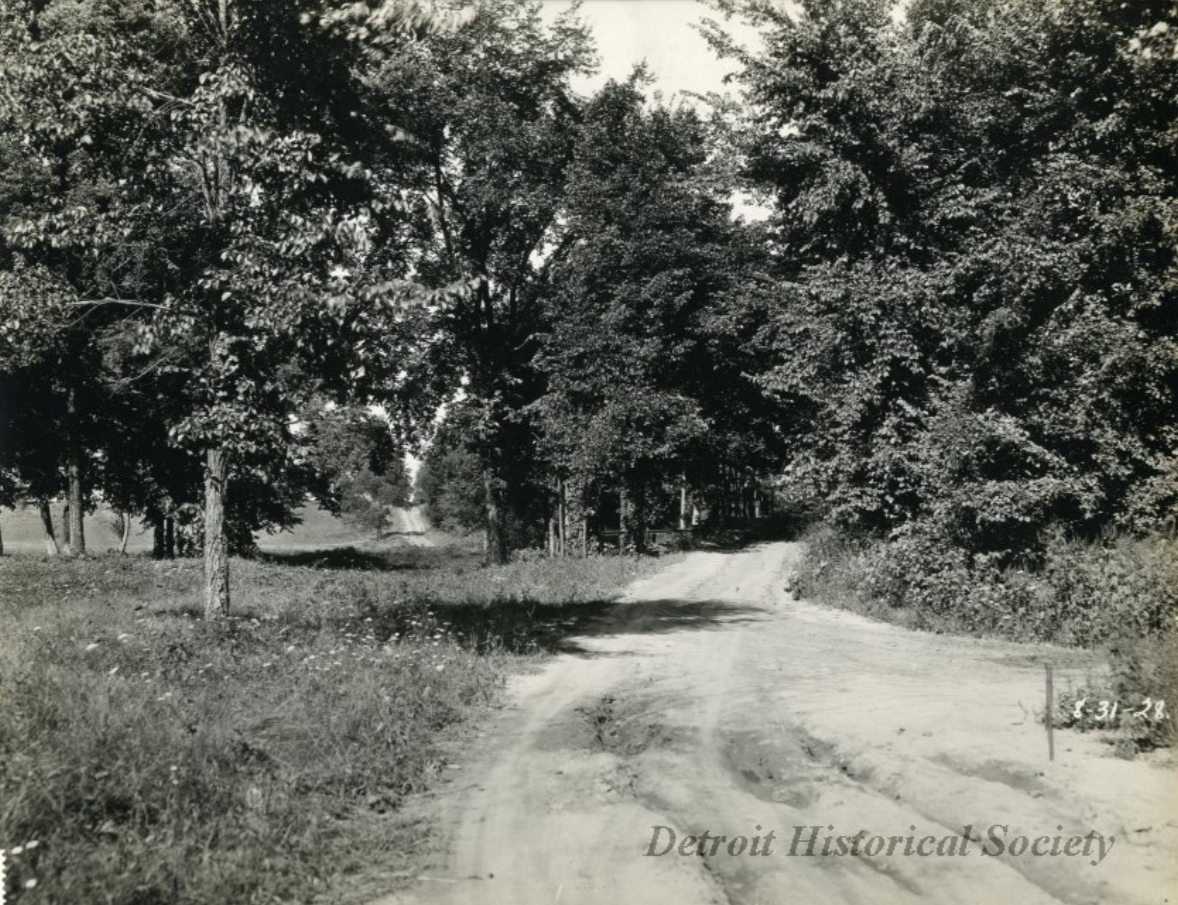
Stay tuned for part V or subscribe for email updates!
SUBSCRIBE FOR UPDATES
Bibliography
Brightmoor: A Community in Action. Brightmoor Community Center, Inc., Detroit 1940.
Brightmoor Community Association, Inc. Ad Detroit Free Press, Feb 17, 1924. Page 36
City of Detroit Water Board work crew. 1926. Detroit Historical Society. Object # 2016.067.002.
Detroit City Council. Historic Designation Advisory Board. Final Report: Official Study of the Proposed B.E. Taylor’s Subdivision House Historic District. October 28, 2008.
Flintoff, Ashley. Peters, Andrew., Smith, Michael. Brightmoor Unearthed: A Neighborhood Analysis. Standard Copyright License, 2011.
Loeb, Carolyn, S. “The Case of the Absent Architect” in Entrepreneurial Vernacular: Developers’ Subdivisions in the 1920s. Baltimore: Johns Hopkins University Press, 2001.
Redford Township Historical Commission. Various resources. https://redfordhistorical.com
“Schoolcraft Road – between Lamphere and Telegraph Roads, inside the 12 mile circle.” Smith Brothers, 1928. Postcard. Detroit Historical Society. Object # 2012.032.036. Detroit Historical Society
Taylor, B.E., Burt Eddy Taylor Personal Papers (1913-1945). Burton Historical Collections, Detroit Public Library, Detroit, MI. Various resources.



